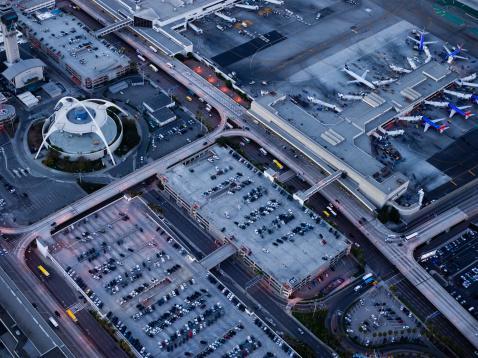A Second Act for the Parking Garage
If ride-sharing and driverless taxis reduce individual commuting, parking facilities could be repurposed as office space, apartments, gyms and more.
Next time you’re in a parking garage, imagine what it might feel like to live there. Most garages are pretty grim: The floors are severely tilted, and the “windows” are just gaping holes in the concrete walls. In winter, it can be as cold inside as it is outside. Today, the comfort level of garages doesn’t matter much — cars are the sole tenants, and they’re not picky.
Researchers forecast that within 10 years, the combination of ride-sharing services and fleets of autonomous taxis will drive down car commuting — and the need to park. This is just one change that rapid urbanization, one of the Megatrends HP Labs has pinpointed, is ushering in to reshape our communities and economies. As more people flock to urban areas and commute to work through mass transits and ride sharing, the need for parking garages will dwindle. A McKinsey study predicts that by 2030, shared vehicles, with and without drivers, will account for 30 percent of the miles traveled on American roads.
But if our world comes to rely less on individual cars that need to be parked and re-parked throughout the day, what will happen to all those garages?
Los Angeles plans ahead
Such a dramatic mobility shift would shake up vast sectors of real estate. The United States has approximately 500 million parking spots — about two for each car. (Some estimates are much higher.) Together, this acreage occupies more space than Rhode Island and Delaware combined and fills vast tracts of prime urban real estate. Parking spaces in Los Angeles, for example, occupy more acreage than the entire city of Columbus, Ohio. Much of that area, analysts predict, could eventually be converted for housing, retail or parks.
Parking’s uncertain future poses a conundrum for urban planners and real estate developers all over the world, because today, most garages are badly needed for cars, yet different tenants might need to be accommodated tomorrow
Take Los Angeles International Airport, the world’s fourth-busiest. LAX is adding a new parking structure with 4,500 spaces. But if car traffic declines, says Justin Erbacci, chief innovation and technology officer at LAX, the new structure is designed to be easily converted to either retail or housing. “We’re making flat floors and higher ceilings,” he says. And instead of placing the ramps inside the building, Erbacci’s team put them on the outside, where they can be removed if necessary.
More space for people
Converting parking garages for other uses is already a growing trend. In Cincinnati, a new headquarters for data analytics firm 84.51 features four floors of commercial space and above-ground parking, with 84.51’s headquarters occupying the five floors above. But if the company grows and parking needs to shrink, the garage is prepped to transition to office space.
Designed by the San Francisco-based architectural firm Gensler, the new garage has level floors and insulated walls. Gensler’s co-CEO, Andy Cohen, foresees other garages transitioning into gyms, apartments and data centers.
Autonomous vehicles’ smaller footprint
Developers see this shift coming. AvalonBay Communities in Arlington, Va., is building a large apartment complex in the Arts District of Los Angeles with parking for 1,000 cars, much of it underground. But the space has been built to be convertible to people-friendly uses, for everything from art galleries to yoga studios.
Even parking lots that survive this shakeout will likely operate differently than they do now. Steven Dietz, a managing partner at Level 4, a new mobility venture fund in Los Angeles, predicts that fleets of autonomous taxis will commute at night to lots in cheaper outlying areas, where battalions of maintenance workers will clean them and charge their batteries. Smaller lots in cities might serve as staging nodes for these fleets.
But autonomous taxis will require far less space than commuters’ cars. Autonomous vehicles are likely to be far smaller than today’s norms — most of them small pods built for one or two people. And since they won’t have to allow for humans swinging open doors to get in and out to park them, autonomous cars will be able to be squeezed together in tight masses, like sugar cubes in a box, each car just inches from the next. "My Tesla weighs 5,300 pounds and carries five people," says Dietz. "These cars will be about one-third that size."
The challenge, of course, is to map out that glittering future while also addressing the acute parking needs and anxieties of today's motorists. Says Los Angeles Deputy Mayor for Transportation, Borja Leon: "Parking is still the most controversial thing we have to deal with."
Learn more about how megatrends like rapid urbanization will shape our communities.



